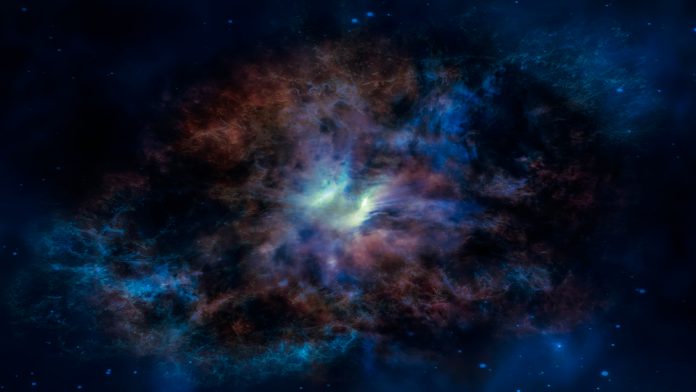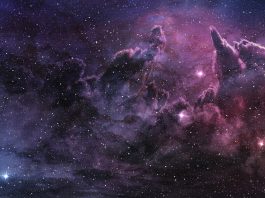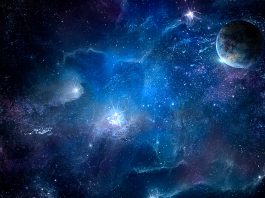The Dark Energy Survey uses observations of 226 million galaxies to gain the most precise insight to the Universe’s composition and evolution.
In 29 new scientific papers, the Dark Energy Survey (DES) explores the largest-ever maps of galaxy distribution and shapes, stretching more than seven billion light-years across the Universe.
The DES collaboration comprises of over 400 scientists from 25 institutions in seven countries.
This incredibly accurate study comprises of data from the survey’s first three years and adds to the most powerful test of the current best model of the Universe, the standard cosmological model.
However, hints remain from earlier Dark Energy Survey data and other experiments that matter in the Universe today is a few percent less clumpy than predicted.
The most recent outcomes from the Dark Energy Survey uses observations from over 1/8 of the sky – 226 million galaxies – observed over 345 nights – to attain the most precise measurements to date of the Universe’s composition and growth.
DES pictures the night sky using the 570-megapixel Dark Energy Camera on the National Science Foundation’s Víctor M. Blanco four metre Telescope at Cerro Tololo Inter-American Observatory (CTIO) in Chile, a programme of NSF’s NOIRLab. One of the most powerful digital cameras in the world, the Dark Energy Camera was designed specifically for the DES. It was funded by the US Department of Energy (DOE) and was built and tested at DOE’s Fermilab.
“NOIRLab is a proud host for and member of the DES collaboration,” commented Steve Heathcote, CTIO Associate Director. “Both during and after the survey, the Dark Energy Camera has been a popular choice for community and Chilean astronomers.”
As the Dark Energy Survey examined nearby galaxies on top of those billions of light-years away, its maps provide both an insight to the current large-scale structure of the Universe and how that structure has developed over the past seven billion years.
Ordinary matter makes up around 5% of the Universe. Dark energy, which cosmologists theorise propels the accelerating expansion of the Universe by countering the force of gravity, accounts for about 70% of the Universe. The final 25% is dark matter, whose gravitational influence binds galaxies together. Both dark matter and dark energy remain invisible. DES aims to illustrate their nature by examining how the competition between them influences the large-scale structure of the Universe over cosmic time.
In order to measure the distribution of dark matter and the impact of dark energy, DES predominantly relied on two phenomena. The first of these is that large scales galaxies are not dispersed randomly throughout space but instead, form a weblike formation as a result of the gravity of dark matter. DES calculated how this cosmic web has evolved over the history of the Universe. The galaxy clustering that forms the cosmic web in turn uncovered regions with a higher density of dark matter.
The second phenomenon is that DES exposed the signature of dark matter through weak gravitational lensing. As light from a distant galaxy travels through space, the gravity of both ordinary and dark matter in the foreground can bend its path, as if through a lens, leading to a distorted image of the galaxy. By examining how the apparent shapes of distant galaxies are aligned with each other and with the positions of nearby galaxies along the line of sight, DES researchers were able to understand the clumpiness of the dark matter in the Universe.
To assess cosmologists’ current model of the Universe, DES researchers contrasted their findings with measurements from the European Space Agency’s orbiting Planck observatory. Planck used light known as the cosmic microwave background to peer back to the early Universe, just 400,000 years after the Big Bang. The Planck data give an accurate insight into the Universe 13 billion years ago, and the standard cosmological model predicts how the dark matter should evolve to the present.
DES concluded its observations of the night sky in 2019. With the experience gained from examining the first half of the data, the researchers are now equipped to manage the complete dataset. The final DES analysis is projected to portray an even more accurate image of the dark matter and dark energy in the Universe.
“The collaboration is remarkably young. It’s tilted strongly in the direction of postdocs and graduate students who are doing a huge amount of this work,” said DES Director. “That is really gratifying. A new generation of cosmologists are being trained using the Dark Energy Survey.”
The methods developed by the team have paved the way for future sky surveys such as the Rubin Observatory Legacy Survey of Space and Time. “DES shows that the era of big survey data has well and truly begun,” added Chris Davis, NSF’s Programme Director for NOIRLab. “DES on NSF’s Blanco telescope has set the scene for the remarkable discoveries to come with Rubin Observatory over the coming decade.”









